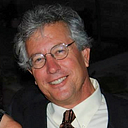An APUSH SAQ — Thomas Jefferson’s Declaration of Independence
4 min readMar 25, 2021
Eighteen questions designed to help students review for the annual exam and that relate to the document that contains “the most potent and consequential words in American history.”
- Briefly describe one historical event, development, or process that occurred before the publication of Thomas Jefferson’s Declaration of Independence.
- Briefly describe one historical event, development, or process that occurred after the publication of Thomas Jefferson’s Declaration of Independence.
- Briefly explain one principle presented in Thomas Paine’s Common Sense.
- Briefly describe one major similarity and one major difference between Thomas Jefferson’s Declaration of Independence and Thomas Paine’s Common Sense
- Identify and briefly explain one piece of evidence that reveals the influence of Thomas Jefferson’s Declaration of Independence on the foundation of the United States government.
- Thomas Jefferson based his call for independence on arguments about the rights of British subjects, the rights of the individual, local traditions of self-rule, and the ideas of the Enlightenment. What was the Enlightenment?
- Thomas Jefferson based his call for independence on arguments about the rights of British subjects, the rights of the individual, local traditions of self-rule, and the ideas of the Enlightenment. Name and briefly describe one piece of evidence in support of this claim.
- In the 12 years leading up to the publication of Thomas Jefferson’s Declaration of Independence, British efforts to collect taxes without direct colonial representation or consent began to unite the colonists against perceived and real constraints on their economic activities and political rights. Name and briefly describe one piece of evidence in support of the claim that Britain sought to collect taxes without direct colonial representation or consent.
- In the 12 years leading up to the publication of Thomas Jefferson’s Declaration of Independence, British efforts to assert imperial authority in the colonies began to unite the colonists against perceived and real constraints on their economic activities and political rights. Name and briefly describe one piece of evidence in support of the claim that Britain sought to assert imperial authority in the colonies (with this piece of evidence not having to do with the efforts to collect taxes.)
- Thomas Jefferson’s call for independence was energized by colonial leaders such as Benjamin Franklin. Briefly describe how Ben Franklin “energized” the call for independence.
- Thomas Jefferson’s call for independence was energized by popular movements that included the political activism of women. Briefly describe how some women “energized” the call for independence.
- Thomas Jefferson’s call for independence was energized by popular movements that included the political activism of laborers. Briefly describe how some laborers “energized” the call for independence.
- Thomas Jefferson’s call for independence was energized by popular movements that included the political activism of artisans. Briefly describe how some artisans “energized” the call for independence.
- In the face of economic shortages and the British military occupation of some regions, men and women mobilized in large numbers to provide financial and material support to the Patriot movement. Name and briefly describe one piece of evidence in support of this claim.
- Name and briefly describe the new form of government that was instituted as a result of the colonists’ victory in their War of Independence.
- After declaring independence, American political leaders created new constitutions that articulated the role of the state and federal governments while protecting individual liberties and limiting both centralized power and excessive popular influence. Name and briefly describe one piece of evidence in support of this claim.
- The American Revolution and the ideals set forth in the Declaration of Independence inspired future independence movements. Name and briefly describe one piece of historical evidence in support of this claim.
- In 1848, a group of women produced a document that was modeled after the Declaration of Independence and proved to be “the single most important factor in spreading news of the women’s rights movement around the country and into the future.” Name and briefly describe one piece of evidence in support of this claim.
